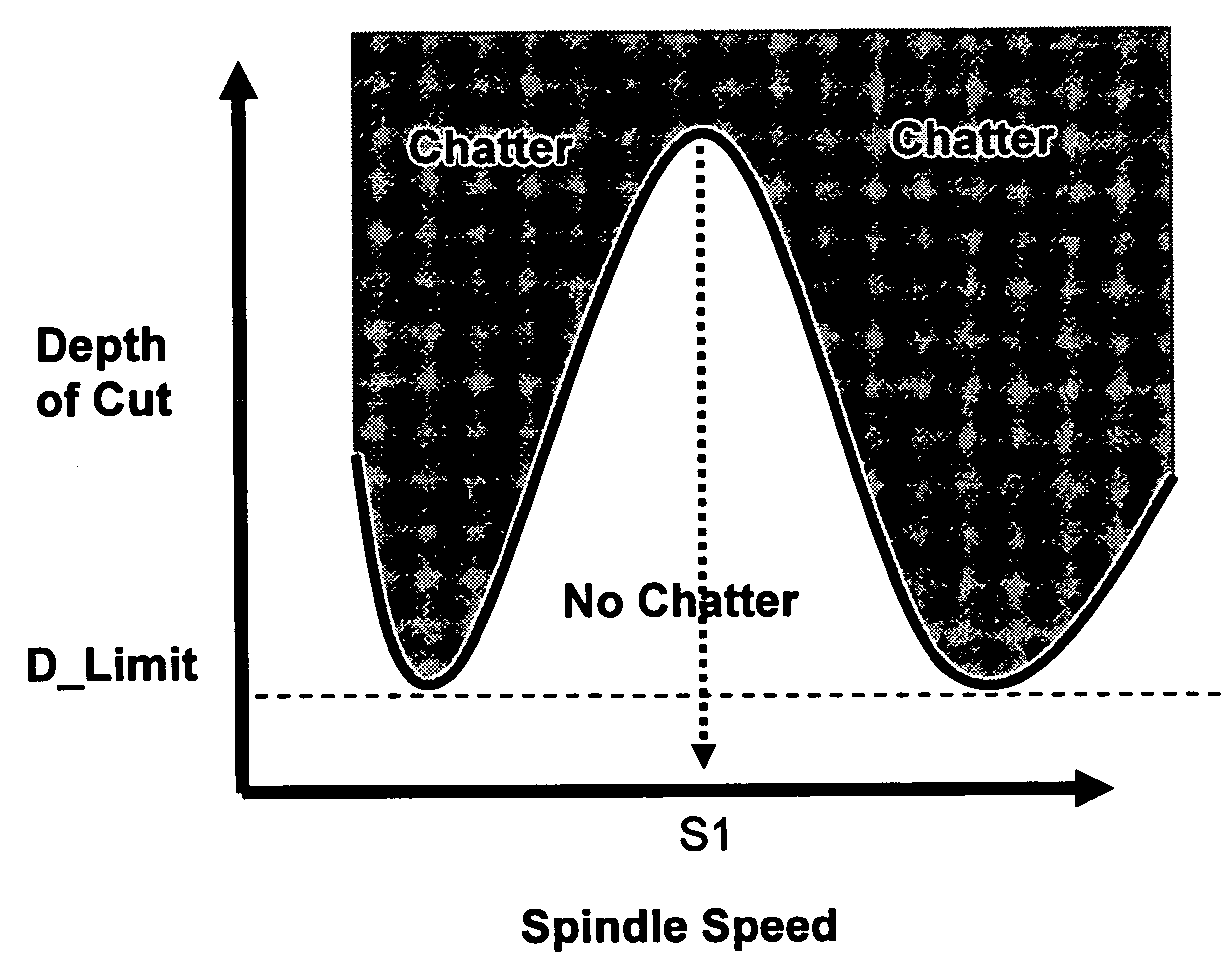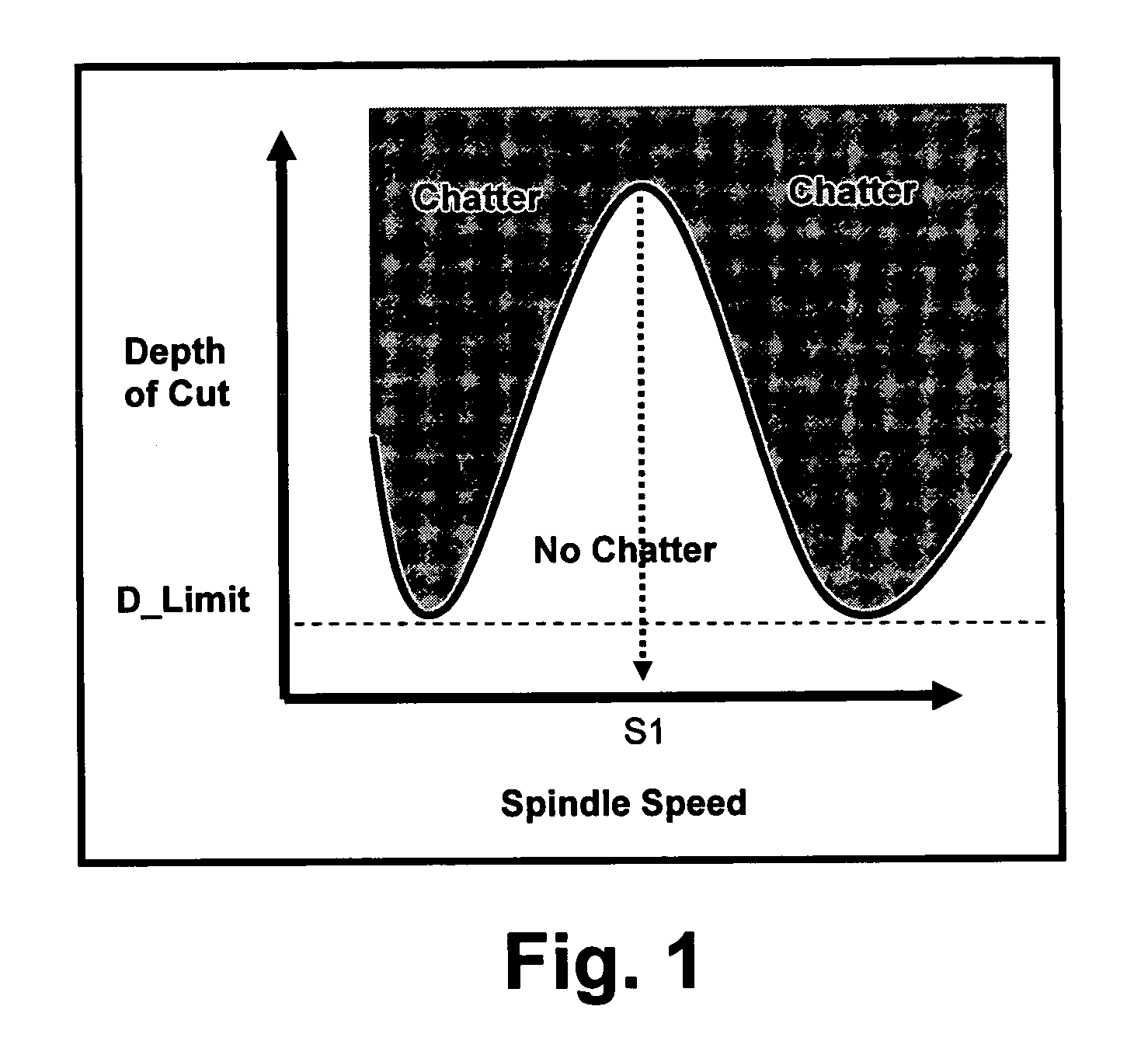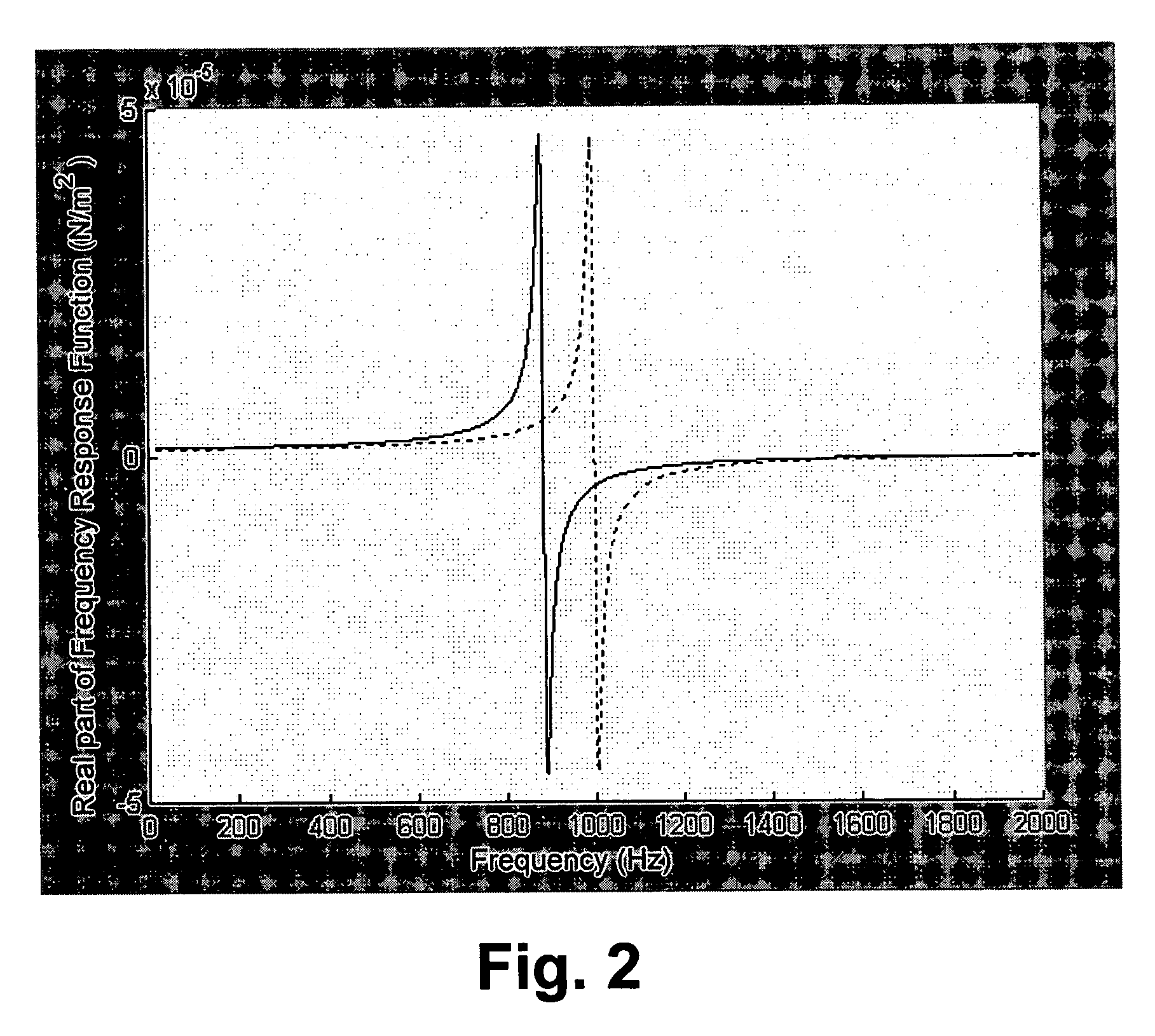Method for reducing the measurement requirements for the dynamic response of tools in a CNC machine
a technology of dynamic response and measurement requirements, applied in the field of cnc (computer numerical control) programming and machining, can solve the problems of lack of repeatability, difficult manual measurement, and inability to meet the needs of specialized equipment and analysis,
- Summary
- Abstract
- Description
- Claims
- Application Information
AI Technical Summary
Benefits of technology
Problems solved by technology
Method used
Image
Examples
example
The method will be demonstrated using an example compound system with computer-generated data. A cylindrical beam with a cantilever end condition will be used to generate the FRF (or receptance) for a sample system. The beam will be considered as composed of two sections. The top (“B”) section will be attached to a fixed boundary (cantilever end condition). The lower (“A”) section will be attached to the upper B section. The B section represents the CNC machine, spindle, tool holder and a short section of the tool. The A section represents a tool extending beyond the short tool section.
For simplicity, the tooling in both sections will have the same diameter (D). The lower section will have length La and the upper section will have length Lb. Both sections will have a diameter of 0.5 inches with material properties representative of 1018 steel. The modulus E for each section will be 30.04*106 psi. The density is 0.284 lb per cubic inch. In order to model damping, we will consider ...
PUM
 Login to View More
Login to View More Abstract
Description
Claims
Application Information
 Login to View More
Login to View More - R&D
- Intellectual Property
- Life Sciences
- Materials
- Tech Scout
- Unparalleled Data Quality
- Higher Quality Content
- 60% Fewer Hallucinations
Browse by: Latest US Patents, China's latest patents, Technical Efficacy Thesaurus, Application Domain, Technology Topic, Popular Technical Reports.
© 2025 PatSnap. All rights reserved.Legal|Privacy policy|Modern Slavery Act Transparency Statement|Sitemap|About US| Contact US: help@patsnap.com



